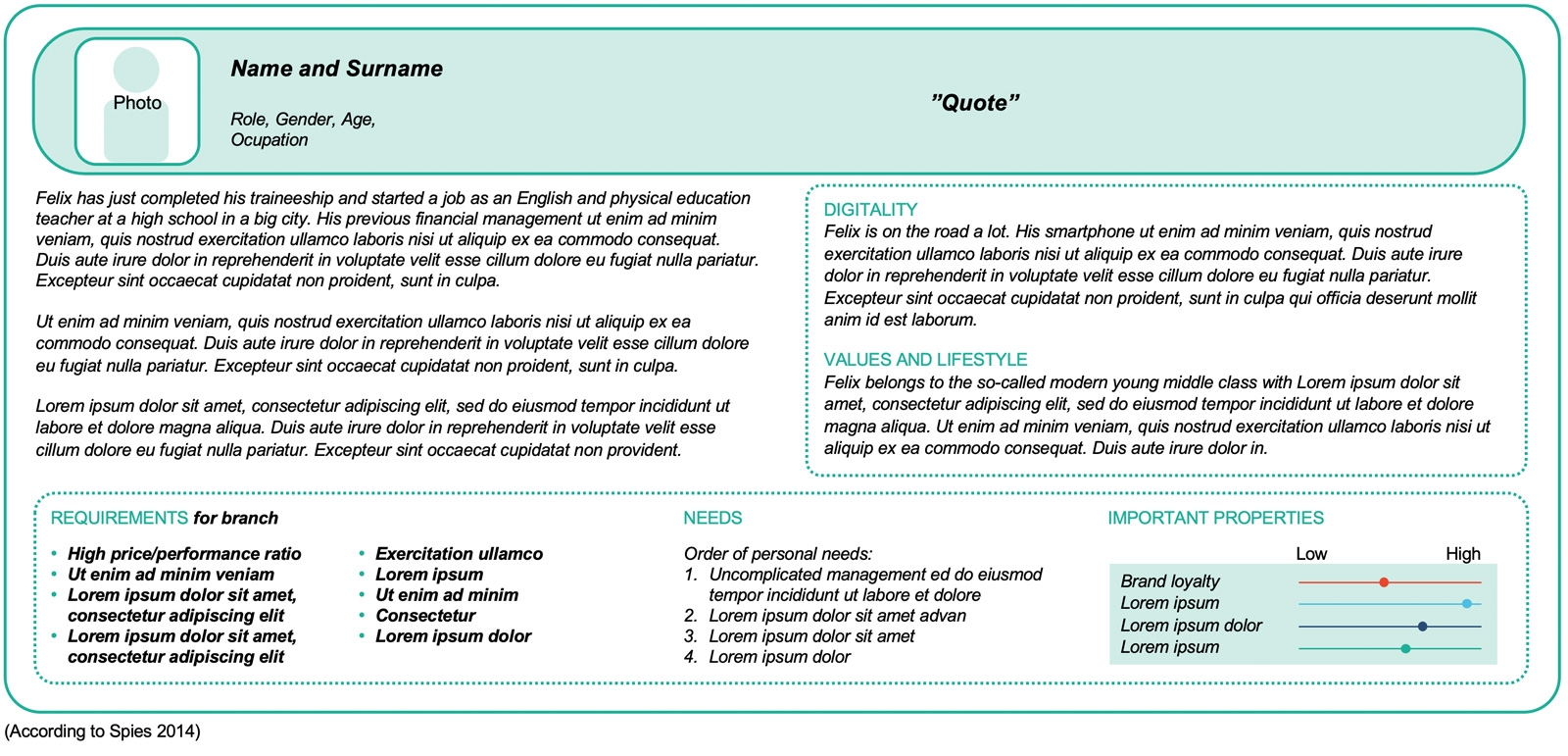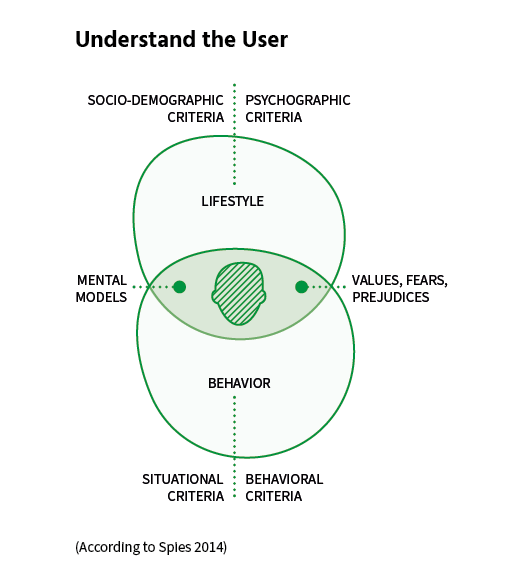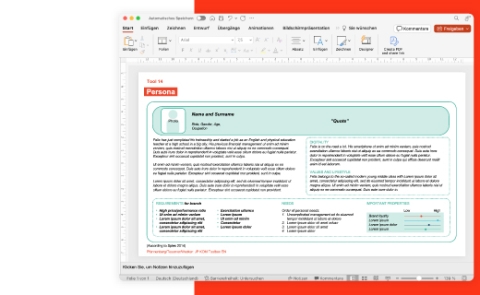Persona

Guiding question
What are the needs and motives of stakeholders – and thus starting points for communication.
Objectives
- Reduce the complexity of stakeholder data
- Develop a vivid picture ("insights") of the behavior of key stakeholder groups
- Identify content starting points for communication
- Enable the creative team to empathize with stakeholders and spark their imagination in the development and design of communication activities
Implementation
Personas are not descriptions of real people, but hypothetical. They represent a stakeholder group/segment in the form of an individual vivid (seemingly authentic) description – that is, the persona description contains (seemingly) individual character traits, experiences and behavior patterns.
Personas combine socio-demographic information, e.g., on the frequency of use of products and media, with observations and assessments of stakeholder behavior. Furthermore, norms and values, fears and hopes, or even prejudice structures are considered.
Much of this information is based on real-life experiences of team members. In addition, personas are generated by combining conventional and agile survey and research methods, e.g.:
- Evaluation of data from or assignment to social milieus
- Evaluation of media usage statistics (cf. Tool 16)
- Mood boards (cf. Tool 51), which visualize the behavior and daily routine of stakeholders
- Photos of the contents of the bag (e.g., “What’s in your handbag?”) from stakeholders
- Creation of a calendar "A day in the life of..."
- Street interviews
- Visits to the persona at work/recreation/home and participant observation at activities
- Shopper test: Purchasing from a stakeholder perspective
- Storytelling (cf. Tool 53)
- Role plays in the team (cf. Tool 107)
- Room installations that recreate the lifeworld of consumers
- Stakeholder observation or self-observation in laboratories that recreate typical living and consumption situations
Theory: Mental model and script
Quantitative methods for analyzing target groups abstract strongly; information such as: What percentage of the target group are men, what percentage are women? What do they earn on average? What hobbies do they have? This is undoubtedly relevant for media planning and the like, such as determining the thousand-contact price. But such quantitative data say little about the experience of stakeholders with the company and its products/services, and little about the kind of information communication measures provide and how they should be designed for the best possible user experience.

Qualitative methods such as the persona approach were developed as part of design thinking concepts to ensure that products/services and communications are user-centric to the needs of the consumer/user.
Based on the opinions/attitudes and associations of the stakeholders to an object (e.g., to the company or its product) mental models are built. They represent a person's thoughts and associations about a topic or subject and influence the behavior of the stakeholder persona. In everyday situations, these mental models result in a script: a set of expectations about what will happen next in a social situation – e.g., ordering in a restaurant. When developing the persona, the modeling of such scripts serves to develop a deeper understanding of the stakeholders and to better anticipate their needs – e.g., also with regard to media usage.
